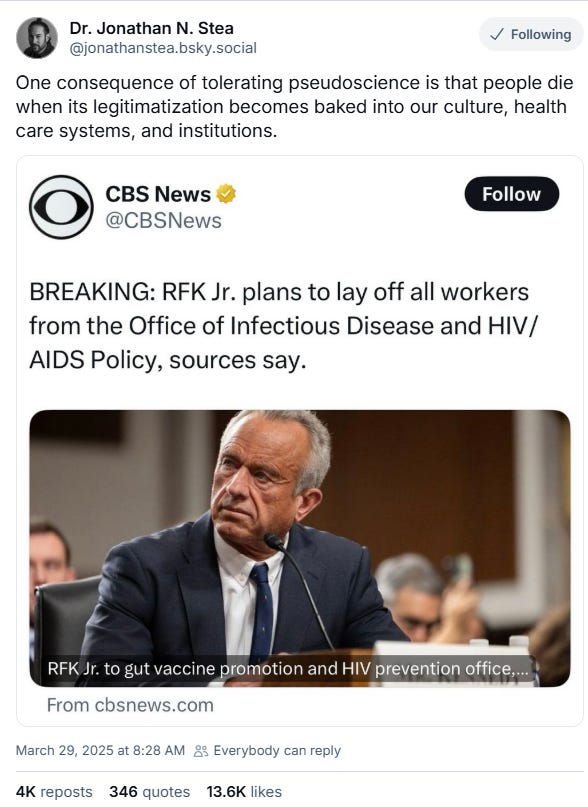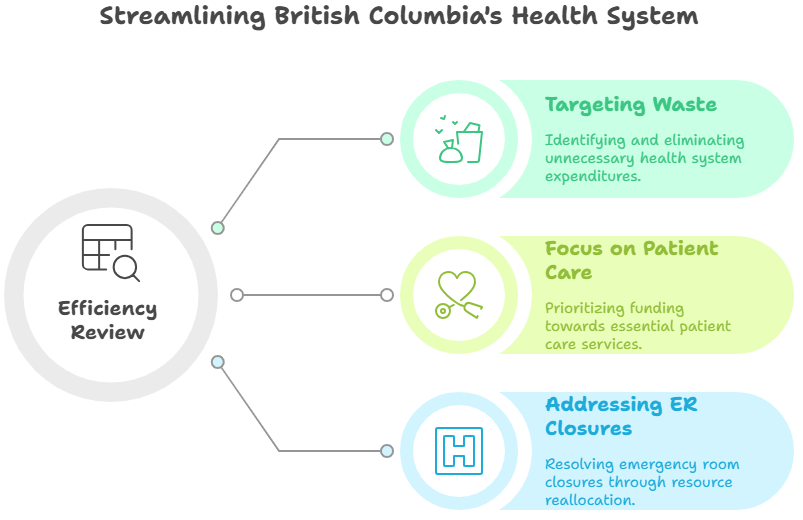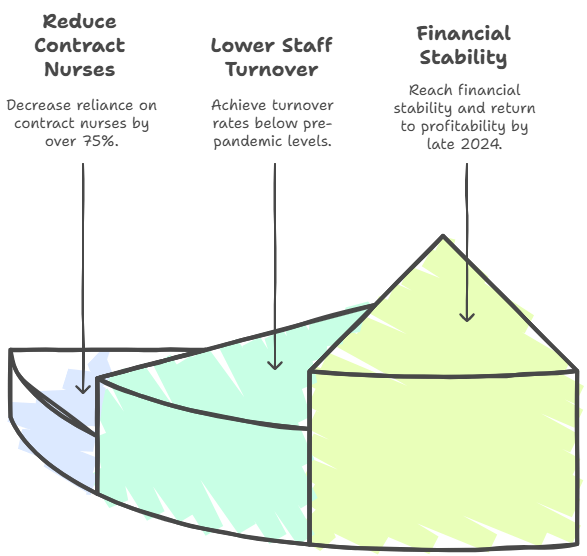✂️ Cut Waste, Not Care?
Your Weekly Dose of Health Insights – Because Your Health Isn’t Just a Headline
Good morning, Other Siders!
Welcome back! You know that feeling when a system is under intense pressure, and you can almost feel the strain? We're seeing that loud and clear this week with Canadian nurses raising alarms that we can't ignore. At the same time, that pressure is forcing change – like B.C.'s major efficiency drive – and sparking innovation, whether it's Apple's AI health ambitions or... well, maybe not the Yellow Fever comeback, that's just worrying! 😅
It really highlights the push-and-pull in healthcare right now: critical needs versus tight resources versus new possibilities. Finding the path forward through that tension is crucial – it's the core of what we explore here and tackle with our partners at The Other Side. And we’ve got proof positive later on that smart investments can ease the pressure. 😉
Ready to explore the pressure points and the potential? Let's get to it!
In today’s edition, we’re serving up:
Canadian Health Highlights:
Nurses to Politicians: “We’re Not OK”
B.C. Declares War on Hospital Waste
Digital and Global Health Buzz:
Apple’s Dr. AI Will See You
Global Pulse
Yellow Fever Comeback
Dive in and enjoy the ride. 🚀
News that Impacts You!
Nurses to Politicians: “We’re Not OK” 🏥🤕
A nationwide survey of Canadian nurses revealed a “deplorable” state of health care, with chronic staffing shortages and burnout leaving patients at risk. The Canadian Federation of Nurses Unions is urging all federal parties (in this election year) to commit to a new patient safety law, as 44% of nurses reported at least one near-miss in recent months due to short-staffing. Linda Silas, CFNU president, warns that without urgent action on workloads and wages, the health human resources crisis will only worsen.
If those caring for us can’t get the care and support they need, what does that say about our health system – and how long will Canadians tolerate it?
B.C. Declares War on Hospital Waste 🗑️💰
British Columbia has launched an efficiency review of all health authorities to ensure every dollar is going to critical patient services rather than being lost in bureaucratic black holes. Health Minister Josie Osborne said the health system is under “a lot of strain” and the review will hunt for any wasteful spending that could be reallocated to care. The first target is the Provincial Health Services Authority (PHSA), with officials and front-line providers working together to trim fat, not muscle, from B.C.’s $25-billion health budget. This move comes as ER closures have hit communities province-wide – a clear sign that resources need a reshuffle
Can B.C.’s hunt for health care inefficiencies actually translate into shorter wait times and better care for patients, and will other provinces follow this cost-cutting treasure hunt?
Apple’s Dr. AI Will See You 🍏
Apple is gearing up to put a doctor in your pocket – and no, we don’t mean Dr. Google. Their secret “Project Mulberry” is an AI-powered health coach baked into your iPhone. It’ll watch your fitness, diet, sleep (maybe even if you snore during Netflix binges) and dish out personalized wellness tips. Big Tech is betting that friendly robo-nudges can make us healthier (and sell more watches 😜). Imagine a teen with diabetes might get AI reminders to check blood sugar and exercise, almost like a virtual nurse on call.
Will Canadians trust an Apple a day to keep the doctor away, or are we about to ghost our real GPs for an algorithm?
Yellow Fever Comeback 😱
Break out the DEET – yellow fever is making a nasty comeback in the Americas. Health officials at PAHO sounded the alarm as cases doubled in early 2025 compared to all of last year. We’re talking 131 confirmed infections and 53 deaths already, mostly in Brazil, Colombia, Peru… even hitting new areas that haven’t seen this virus in ages. Diseases we have vaccines for (hello, there’s a very effective yellow fever shot) can still bite us if we let our guard down.
Will this surge jolt countries (and travelers) into upping their vaccination game, or are we in for a feverish ride literally and figuratively?
💭Let us know what you think in the comment section.
🕵️♀️Case in Point
Investing in Nurses – Emory Healthcare’s $150M Gamble Pays Off
Background & Problem: In 2022–2023, like many health systems, Emory Healthcare (Atlanta, USA) was drowning in nurse turnover and exorbitant costs for contract nurses. By March 2023, Emory had 1,370 contract nurses propping up staffing and alarmingly high nurse vacancy rates. The reliance on temp staff not only drained finances but also threatened care quality and team morale. Essentially, Emory’s problem was a severe workforce crisis – a familiar challenge in Canadian hospitals too – where overworked staff leave, hospitals then pay agencies double to fill gaps, creating a vicious cycle of burnout and budget blowouts.
The Solution: In mid-2023, Emory’s new CEO, Dr. Joon Lee, took a bold approach: rather than trim labor costs, he invested an extra $150 million in staff salaries and benefits. This funded raises for 20,000 out of 25,000 employees – focusing on frontline nurses, medical assistants, cleaning staff, and technicians. While other hospitals were freezing wages or laying off, Emory bucked the trend. Alongside the raises, Dr. Lee restructured leadership to improve “systemness” – breaking silos so the entire hospital network could respond nimbly to crises and redistribute workload as needed. In short, Emory gambled that by paying its people more and empowering leaders, it would stabilize the workforce and save money in the long run.
The Outcome: Emory Healthcare's bold $150 million investment in staff pay yielded remarkable results within six months:
These achievements not only saved millions in agency fees but also enhanced patient care continuity and boosted workforce morale, enabling effective management of crises such as cyberattacks and drug shortages.
How We Can Help: At The Other Side of the Care, we understand the critical importance of a stable and engaged healthcare workforce. Drawing inspiration from successful models like Emory Healthcare's investment in staff retention, we offer tailored solutions to address workforce challenges within Canadian healthcare organizations. Our approach includes:
Strategic Workforce Planning: Collaborating with your leadership team to develop comprehensive strategies that anticipate future staffing needs, ensuring a resilient and adaptable workforce.
Professional Development Programs: Designing and implementing continuous learning opportunities, including training and career advancement pathways, to foster employee growth and satisfaction.
Operational Efficiency Improvements: Identifying areas to streamline processes and reduce administrative burdens, allowing healthcare professionals to focus more on patient care.
By partnering with us, your organization can implement effective retention strategies that not only reduce turnover but also enhance patient outcomes and operational performance. Let's work together to build a sustainable and thriving healthcare workforce.
📈What’s Trending🔥

Referral
The Friendly Side of Care: Bring a Pal!
Share this link with another healthcare nerd, practitioner, or someone you feel will benefit from this information
Why? Because when you do (and they sign up), you'll earn points toward some fantastic rewards. Things like points towards a free subscription to The Other Side of Care paid content and upcoming merchandise!
🎤 We’re All Ears 👂
How are these healthcare developments affecting you/ your organization? Do you have success stories or challenges you'd like to share? Reply to this email—we read every response and might feature your insights in our next newsletter!







